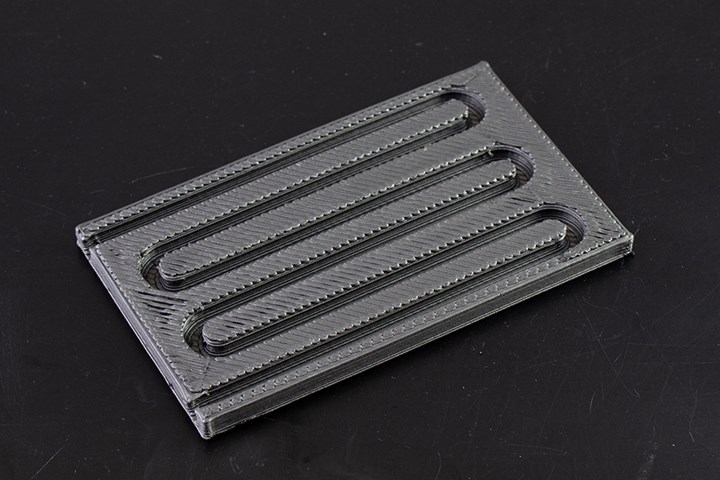TCPoly thermal conductive filaments for 3D printing
The Ice9 product offerings are composed of carbon-based fillers and ceramic filler parts.

Source | TCPoly
Thermal solutions provider, TCPoly (Atlanta, GA, U.S.) features the developments of its TCPoly Ice9 thermally conductive filaments, the first heat-conducting plastics for open source FDM 3D printers. Composed of a mix of carbon-based fillers and ceramic filler particles, the 3D printing filaments are said to retain a thermal conductivity up to 50 times higher than standard filaments (10 W/mK), such as Acrylonitrile-butadiene-styrene (ABS), polylactide (PLA), Nylon, PETG. When combined with the design freedom of 3D printing, TCPoly says its filaments can be used to make high-performance heat transfer products for electronics thermal management, heat exchangers, mold tooling and other industries.
TCPoly offers three varying Ice9 filament products. Flex (TPE), said to have the highest thermal conductivity at 8 W/mK and high toughness, is available in electrically insulated grades. Retaining a tensile strength of 15 MPa, maximum temperature use holds at 110ºC. Rigid (PA6) is a nylon-based filament with the second highest thermal conductivity at 4 W/mK, a tensile strength of 30 MPa and overall high modulus and temperature stability. Finally, Aero (PEKK), in addition to its thermal conduction of 2.5 W/mK, is flame-retardant with a temperature stability above 250ºC and a tensile strength of 100 MPa.
Related Content
-
3D-printed CFRP tools for serial production of composite landing flaps
GKN Aerospace Munich and CEAD develop printed tooling with short and continuous fiber that reduces cost and increases sustainability for composites production.
-
Carbon fiber, bionic design achieve peak performance in race-ready production vehicle
Porsche worked with Action Composites to design and manufacture an innovative carbon fiber safety cage option to lightweight one of its series race vehicles, built in a one-shot compression molding process.
-
Plant tour: Albany Engineered Composites, Rochester, N.H., U.S.
Efficient, high-quality, well-controlled composites manufacturing at volume is the mantra for this 3D weaving specialist.










.jpg;maxWidth=300;quality=90)


